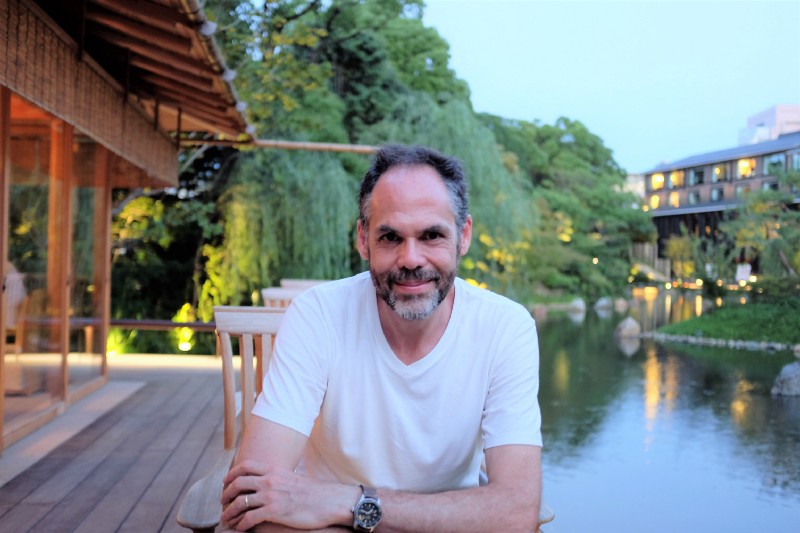
- Name: Graham Hobson
- Age: 52 (but mentally 28)
- Current position: Part-time CTO, Angel Investor, Advisor
- Background: I’ve always been a technologist, from learning on a TRS-80 and hacking my way around various pre-internet online systems, studying Computer Science at Uni and then working in fintech for 14 years (London Stock Exchange plus three investment banks). In 2000 I started Photobox with a friend and went through a very lean first five years of startup existence. We then merged with a french company and expanded across Europe making several acquisitions along the way including Moonpig, and finally selling the business to private equity in 2016.
1. Tell us about your life before leadership — what kind of roles and projects did you work on?
I can’t say I was a great developer. I’d use whatever was to hand (normally C or Visual Basic) and code up some solution to a business problem.
Most of the projects I worked on were to do with financial markets. I became knowledgeable quite quickly on how Japanese derivative markets worked and how technology could be used to find pricing anomalies, which led to more general financial applications over the years. I was definitely an individual contributor: good at delivering on my own, not at all good at working in a tech team or delegating to others.
2. How did your first leadership position come about, and was it intentional on your part?
There came a point in my mid-thirties where I was ready to make the jump to founding my own startup. I had accumulated knowledge, some savings from contracting, confidence and useful contacts for funding. Plus it was 1999 and the Internet was really booming. So, I wrote a business plan and kept expecting others to shoot it down, but they didn’t and so it kicked off. Serendipity was a huge part of it; connections and lucky breaks made it possible.
I found it easy to get going, but in reality I’d never managed a single human being before. I was one of those CEOs who lacked leadership skills but managed to pull it off by being so focused on the vision and putting tonnes of energy into it.
3. How did you manage the transition? What came easily / what was difficult?
I was lucky in that I had a great co-founder — Mark Chapman — who was the grounded, mature process-driven guy. He had a very calm way of dealing with things and was good at focusing on the parts I was bad at (people, operations, book-keeping, contractual stuff), freeing me to work on the product and tech vision, biz dev and investor relations.
I made the decision early on not to code myself, which was the right one. Instead, I hired two developers called Chris to build our systems: one Chris for the website, and the other Chris to build our production/printing systems. I was then able to direct my attention to the overall business.
Throughout that time, I still found managing people very difficult; I didn’t properly fire someone until about 2005 and even then I think he fired himself because I was making such a bad job of it(!).
4. What was your biggest failure in that first leadership role?
In that first phase of the company my biggest mistake was going too slowly. I wish we’d accelerated quicker (taken more risk, raised more money, put more into marketing) to get us through those startup doldrums faster. Otherwise it all went pretty smoothly.
In 2006 however, I took on a group CTO role for the expanded company across Europe and I found myself really out of my depth. I had two larger teams, about 15 engineers in the UK and a similar number in France. We had decided we had to get down to a single platform across Europe (retiring 6 legacy platforms) and that project was nearly the end of me. I realised blind faith is not a strategy and I needed to completely reinvent myself as a result of that project failing.
5. What made you keep doing it?
The company was still my baby and giving up was not an option. I felt obligated to myself, the customers and the investors to see it become the vision I had in my head. Even today, having been out of the group for several months, I feel a strong sense of ownership and loyalty.

6. Tell us a fun fact that nobody knows about you
I had a break this summer which gave me lots of opportunity to travel and get involved in lots of random projects. I’ve since learned to be a proficient waiter, become a qualified barista and got back into skateboarding in a big way with one of my sons.
7. What are the three key skills you think every lead needs?
First, a very clear understanding of the business problem you are trying to solve and what a successful outcome looks like. There are many ways to get there, but as long you are focused on the result you can steer towards it.
Secondly, I think you have to be always learning and absorbing new information. Every situation is different, so find out what technologies and tools are out there. What are your team good at? What energises them? What’s been tried before? Use all this to set your course and then keep everybody aligned around the goal.
Last but by no means least — take ownership. What every CEO wants is a technologist who says: ‘Don’t worry, I’ll take care of it’. Whether it’s project delivery, compliance, people management etc. you’ve got to own it and be confident you can get it done. If you aren’t sure you can pull it off then be open about it and get some help (advice, resources, coaching — whatever) to fill the gaps.
8. What have you learned about acquiring and retaining talent?
Wow — that’s hard! In London there is such high demand for great developers that it’s really hard to find the perfect team. That being said, my teams have always worked well when I’ve hired an amazing lead, who totally understands the business vision and where we have great chemistry. If that relationship works well in the first instance then they are much more likely to go out and find a way to hire great people who will be equally excited to be there.
9. How do you motivate your team while managing their stress levels?
As the CTO, you are the interface between the business and the team. It’s important to embed the business focus and strategy within the team, explain why these things are important and what their role is in relation to delivery. You do however, also need to protect the team: stop them from being distracted, recognise when their stress levels are too high and perhaps when the business is being too demanding or unrealistic.
10. How do you manage your own stress levels and productivity?
I learned how not to manage stress in 2007–2008 when my platform consolidation project was running a year late. I ended up in hospital. Clearly, I had the balance of my life all wrong — too much focus on and obsession with work / not enough time with my wife and boys. After that, I started swimming regularly and in more recent years began running nearly every day. I find the three-way combination of work time, family time and physical activity keeps me in the right state of balance and I’m much more resilient to stress now.
As for productivity I’ve never really had a problem. I have a terrible memory which makes me rely heavily on tech tools like calendars, reminders and Evernote. But I also have a great routine that ensures I always crack through the most important, timely tasks that need doing while appearing to the outside world that I am juggling several tasks at once. I also have no resistance to starting a new task or project which helps.
11. How do you stay in sync with other parts of the business?
I think they call it MBWA — Management By Walking Around. Not only does it help my step count to get away from my desk, but it really helps my understanding by spending a decent part of the day going around and talking to other leaders, teams, and stakeholders to see their perspective on things. I do this a lot externally as well and it’s always really useful.
12. Where do you see yourself in 5 years’ time?
Technically I could retire now (and do more travel, more coffee making, more skateboarding), but I love this industry and I always love that cycle of learning, fixing, measuring towards some big goal. So, I’m sure I’ll still be involved in some tech projects in one way or another in 2022.
13. Finally, what product do you wish you’d invented?
Definitely Instagram. In the mid-90s I was working for UBS in central London. I’d marvel at the beauty and diversity of London and I used to love doing any random thing with colleagues and friends after work or at weekends — pubs, rollerblading, travel etc. At the time I was just starting to build websites and I guess a form of early blogging; I imagined that there might be some way to capture images of interesting stuff from each day and post it for friends to see. I even tried to cobble it together with a very early (very crap) digital camera and some tools to generate Compuserve-hosted web pages. But apparently I was about 15 years too early for that business model!
Part of the new ‘From Zero to CTO’ series — Follow us to be kept up-to-date on the next segment and other articles.
If you, or your CTO / technology lead would benefit from any of the services offered by the CTO Craft community, visit: www.ctocraft.com or contact us via email at: info@ctocraft.com.
Subscribe here to Tech Manager Weekly for a free weekly dose of tech culture, hiring, development, process and more…
